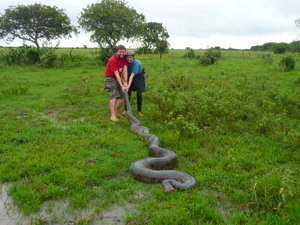

Therefore, basic natural history information that can potentially contribute to the conservation of Atlantic forest snakes are urgently needed. Indeed, 53% of the threatened snakes of Brazil occur in the Atlantic forest and there is a lack of baseline data for an additional ten snake species, from this ecoregion, making the assessment of their conservation status difficult (ICMBio, 2018). The extensive habitat loss to which the Atlantic forest was subject in the last decades have likely had a negative effect on its snake fauna.


2000), with only 16% of its original area remaining as forest ( Ribeiro et al. However, the Atlantic forest is one of the most threatened tropical ecoregions ( Myers et al. Furthermore, almost half (45%) of the Atlantic forest snakes are endemic to these forests. The Atlantic forest of eastern Brazil harbours a very rich snake fauna, with approximately 140 species, representing 34% of the 412 species of snakes known to occur in Brazil ( Costa and Bérnils 2018 Marques et al.

2014), many species are still only known from small portions of their distributions. Neotropical snakes are no exception and despite the studies published on these animals ( Strüssmann and Sazima 1993, Marques 1998, Martins and Oliveira 1998, Cechin 1999, Di-Bernardo 1999, Sawaya et al. Valuable natural history information is available for only a small fraction of animal species, usually those that are large or common and relatively easy to study ( Greene 1994). For example, Bothrops jararacussu is one of the most widespread species in the Atlantic forest, yet most of its natural history data come from only a few localities of southeastern Brazil ( Marques 1998, Martins et al. Despite their obvious relevance, there is still a considerable knowledge gap on the ecology and behaviour of most snake species, even in well-studied regions in the world ( Greene 2005). Natural history information, what organisms do in their respective environments, including interactions between them ( Greene 1994), contributes beyond the basic refinement of science ( Greene and McDiarmid 2005) but also to our understanding of how environments function and, consequently, aids in many aspects of conservation, management, and appreciation of nature ( Caughley 1994, Brooks and McLennan 2002, Dayton 2003). This study provides useful information for understanding the structure of snake assemblages of the Atlantic Forest and is potentially useful for conservation assessments and for designing conservation plans. Seventeen different types of defensive tactics were recorded in the species found in the field. A higher number of enlarged follicles, eggs, and/or embryos were recorded during the warm and rainy season. Most of the species found in the field use both open areas and forests, are primarily terrestrial, present diurnal activity, and include frogs in their diet. Here the natural history of a snake assemblage at Etá Farm region, Sete Barras municipality, south-eastern Brazil is described, and a visual guide and an identification key provided that can be used by researchers and local people to identify snakes from this region. Indeed, 53% of the threatened snakes of Brazil occur in the Atlantic forest. This extensive habitat loss must have had a negative effect on its snake fauna. However, the Atlantic forest is one of the most threatened tropical ecoregions, with only 16% of its original area remaining as forest. Approximately 140 snake species are known to occur in the Atlantic Forest with nearly half being endemic to this ecoregion.


 0 kommentar(er)
0 kommentar(er)
